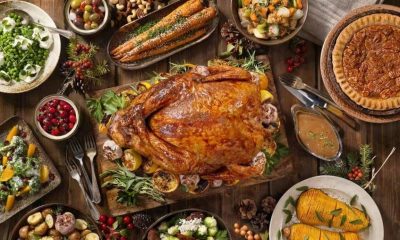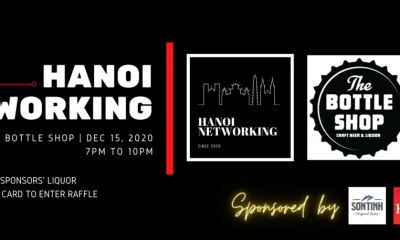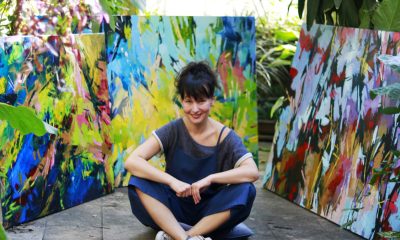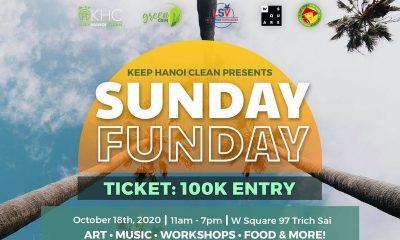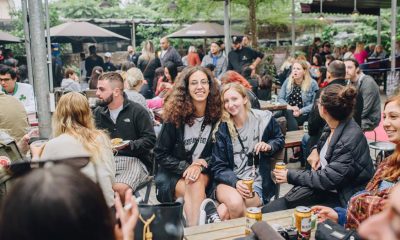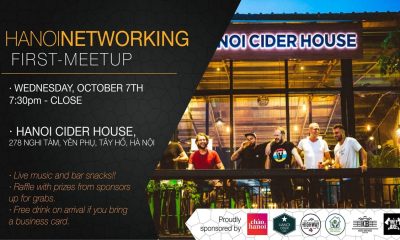Art & Culture
[Exhibition] “2020- Life in Times of a Global Pandemic”
New exhibition looks at Hanoi-based artists’ works created under stresses of coronavirus outbreak
Published
4 years agoon

On a chilly December night, several young artists convene at ARCH Cafe Bar, celebrating the end of an historically miserable year. The year 2020 has seen multiple unexpected tragedies, social unrest, environmental disasters, and a pandemic that has brought the world to a standstill. As many struggled with boredom and dread, creatives also struggled to showcase their artistic endeavors during uncertain times. Fortunately, curator Marijke Andrea Tymbios has provided a showcase for local Hanoi-based artists to reveal their coronavirus-inspired artwork, with her exhibition: “2020- Life in Times of a Global Pandemic.”
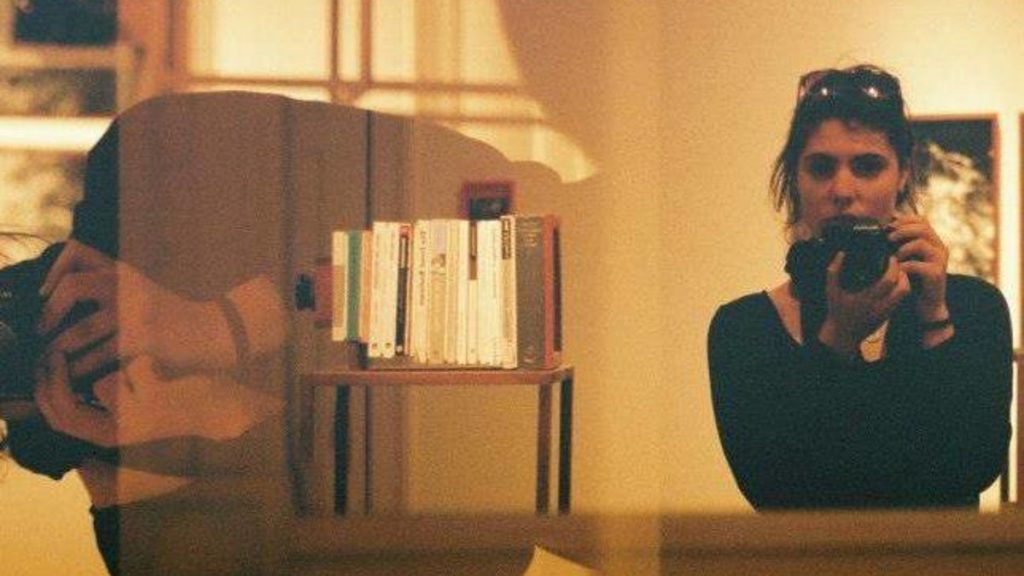
Tymbios also plans to feature her own project in the upcoming exhibition; a rewrite of profound passages from Buddhist texts. Passages that helped her stay mindful during the dreary doldrums of the worldwide lockdown.
“My mom kept telling me I had to make something,” Tymbios says. “She kept saying ‘People are going to ask you what art did you create in lockdown?’ It sucks that my parents are liberal. They encourage this shit.”
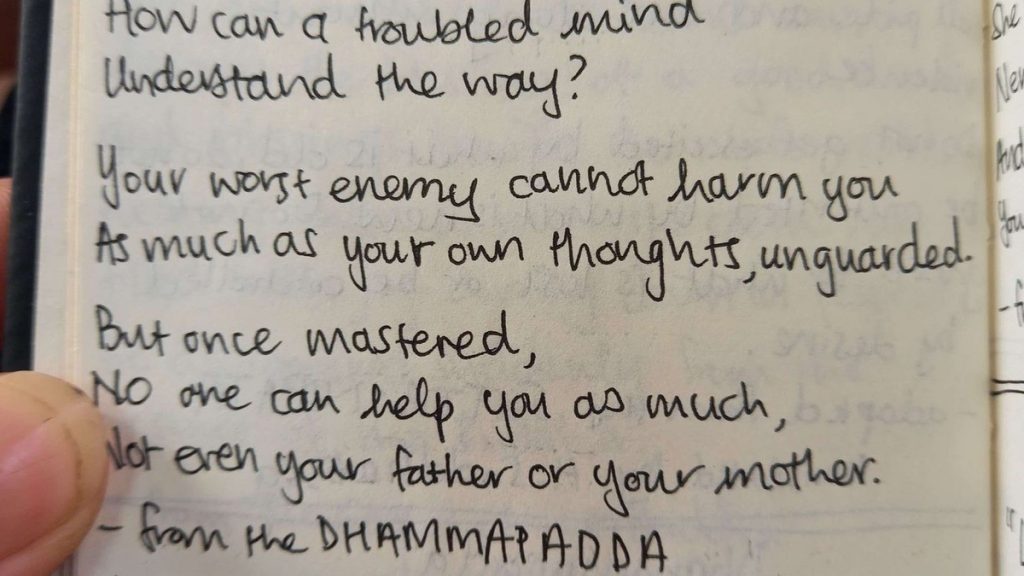
Tymbios speaks slowly, pondering each word behind the haze of a freshly rolled cigarette. Her long brown hair, baggy clothes, and subtle smile make her appear as a beatnik Mona Lisa.
“This was a year of lessons,” she says. “I got what I wanted but it was tough. I wanted to grow but in order to grow you need to suffer. That sure did happen.”
In her native South Africa, Tymbios curated two art exhibitions, featuring the work of her peers in art school. However, the previous events lacked any specific theme. Her newest exhibition offers insight into the various experiences felt by artists across the globe.
“2020 is a huge topic in general,” she says. “It is good to see what has happened to everyone else in the world.”
Tymbios’s exhibition features plenty of diverse mediums. Sculptures, texts, paintings, video art, and other installations are set to take up residence in every colorful color of the ARCH Cafe. Despite the numerous pieces, Tymbios recognizes two common themes in the art presented: humanity and nature.
“This exhibition features humans in lockdown, dealing with boredom or rediscovery,” she explains. “Meanwhile, during lockdowns, you also see nature reviving itself.”
British artist Livy Nelson’s sketch speaks directly to this dichotomy. A dead or dying rat is the painting’s focal point as a decaying pink tail spirals around it. The strange subject seemed obvious for Nelson. During her lockdown in the backwoods of southwest Scotland, Nelson occupied her time by drawing rats. For the upcoming exhibition, she plans to reproduce her sketch as a larger painting.
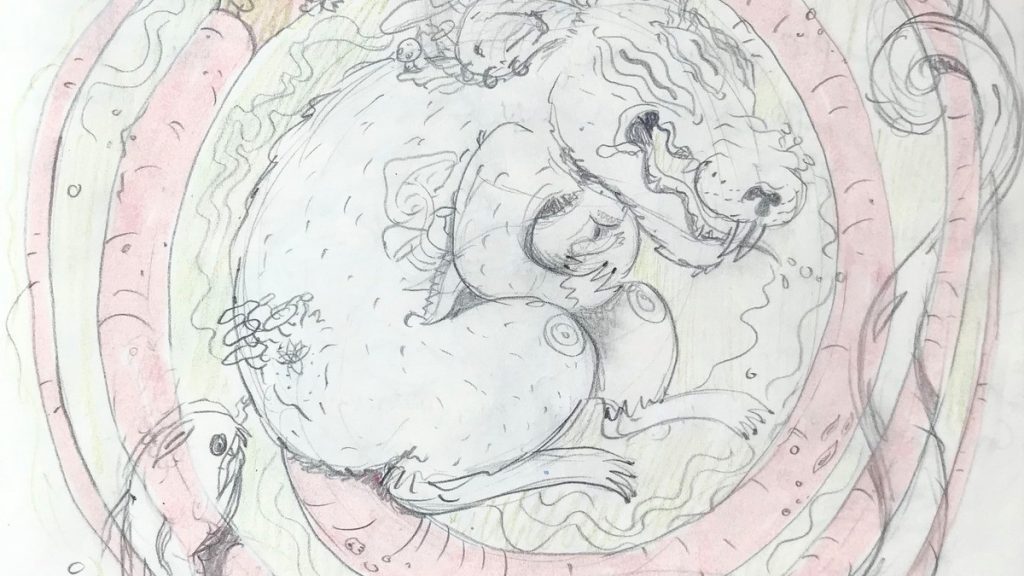
“I like rats,” says Nelson, fiddling with her baby-head earring. “My mom hates rats which makes me like them more.”
Nelson’s bizarre fascination with rats drew many parallels to the chaos of 2020. Naturally, rats are considered to be the chief carriers of disease. Furthermore, 2020 coincides with the Lunar Calendar’s Year of the Rat. Nelson also points out that rat biology is eerily similar to human biology, though notes that the reception of the rat differs throughout the world.
“In Western countries, rats are known for being dirty and riddled with plague,” she says. “In the East, the rat is celebrated for its adaptability.”
These distinctions are analogous to how Western countries, like the United States and the UK failed to appropriately respond to the threat of Covid-19. Meanwhile, many Asian countries such as Vietnam and Taiwan, quickly acclimated to life under the pandemic and avoided further devastation.
While Nelson believes her work should be interpreted by the viewer, she admits decay is a major theme. For the abstract painter, the thought of decay is a huge motivator.
“This year, I’ve spent so much time thinking about the past that eventually I’m going to decay and waste my time not thinking about the present,” Nelson says.
Despite the grim theme, Nelson does not view decay as something necessarily negative. In nature, decaying organisms enrich lush plantlife and fungi, such as psilocybin mushrooms. Sure enough, magic mushrooms grow on Nelson’s decrepit rat, hinting at some strange, new beauty yet to come.
“My mood was how trippy this year has been,” Nelson says. “That is the impression I wanted to give.”
While Nelson comments on the natural world in relation to the pandemic, artist Nguyen Dam (main image) is more concerned with channeling the manic energy felt by humans in lockdown. This past August, as Vietnam braced itself after a second outbreak occurred in Da Nang, Dam kept himself busy with an ambitious sculpture involving video artistry and psychedelic lighting.
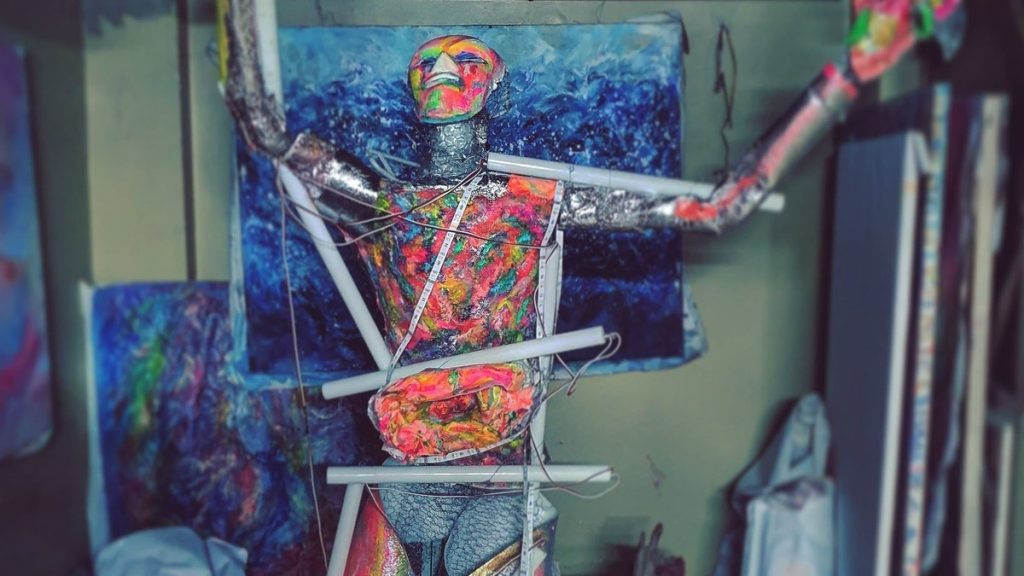
The sculpture is an undefined human with outstretched arms, his face a canvas for several emotions. A video projection plays across the petrified figure, submerging its acrylic skin in cool pinks and deep purples. Frantic drumbeats echo in the background, the notes of an intense composition made by Dam during lockdown. The motionless sculpture appears to be in the throes of wild movements.
Dam shares some similarities with his rollicking creation. Both art and artist have a slender, wiry frame and express a deep, eclectic love of music. However, while the sculpture is bald, Dam’s wild, long hair is kept in a tidy ponytail. It is easy to imagine him unleashing his unruly mane among concert crowds, head-banging to pounding electronica.
“I am a slow person,” he says, with a laugh. “I live very slow. So when everything slowed down this year, I had a chance to catch up. I had time to try out different art.”
In a year in which concerts are socially irresponsible, Dam creates a vessel in which a music lover can rock out to the concerts that 2020 never saw.
“I wanted to make a sculpture that is suitable for every kind of music,” Dam says. “He is chilling, he is dancing, he is trapped, he is escaping. It is up to the imagination.”
Dam’s piece takes up an entire floor of the exhibition. The figure poses in the center of the room, as pulsating, projected colors swirl around it. Despite it being a still, inanimate object, the combination of sculpture, lighting, sound, and color, paint the steel skeleton as a phantom partygoer, unrestricted by social distancing.
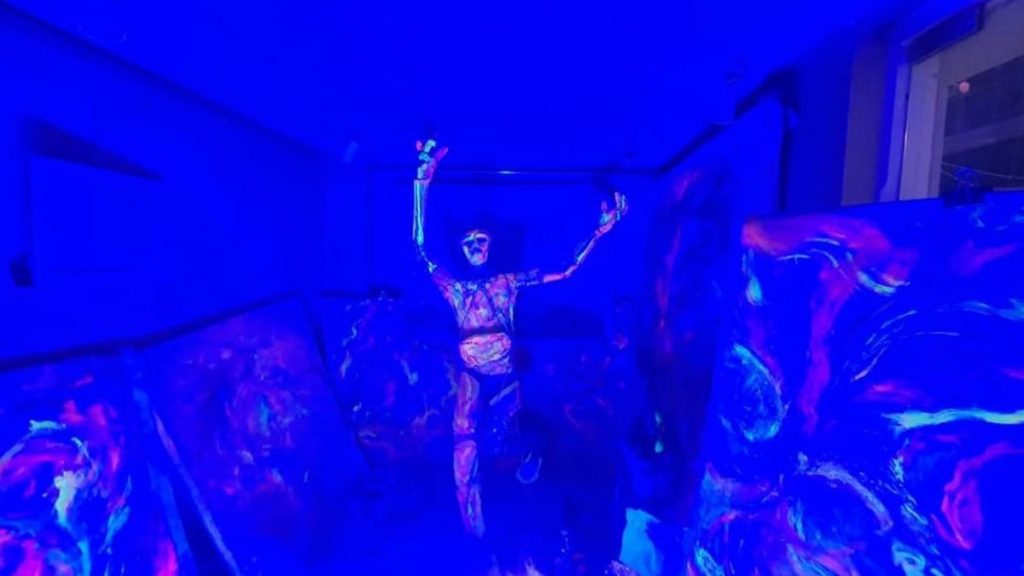
“I see him as a symbol for a living, human being,” Dam says. “It is a soul.”
Dam plans for his art to appear at future concerts, hoping that his lonesome raver can find a dance partner.
While Dam’s work reflects on the gatherings that never were, Patrizio Mancuso’s photography depicts the quiet, intimate moments of lockdown life. One of the minds behind the Somatika exhibition earlier this year, Mancuso unveils his work he made when isolated in his studio apartment with his new girlfriend of only a few weeks.
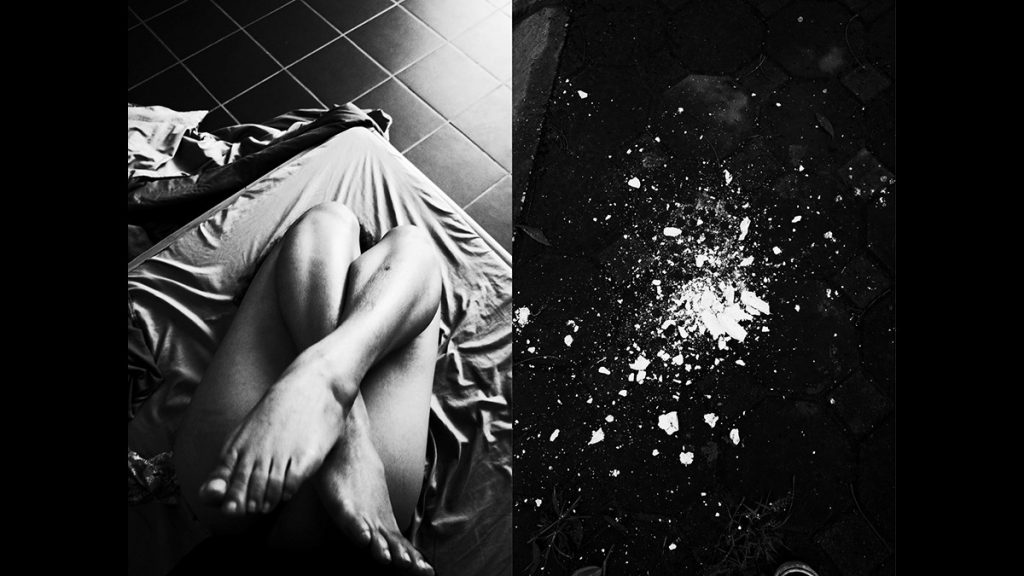
While being stuck together for an unspecified amount of time isn’t ideal for any relationship, Mancuso was happy to have a companion and model to work with.
“It was a jump in the dark,” Mancuso says. “I’m not used to sharing or living with another person. We had our moments but we handled it well. It was a good test for a new relationship.”
He chuckles, remembering countless, happy moments in his tiny studio.
“I was shoving the camera in her face every 10 minutes,” he says, revealing one of his photographs. A crown made of aged bananas sits on a throne of ravenous curls, spiraling above the haunting eyes of Lan Anh, Mancuso’s partner. In another, her legs appear on tousled bedsheets, bent in a way to imply a heart. “It felt like a honeymoon.”

When the lockdown first began, Mancuso began taking photos of his partner every day. Yet, the limited setting did not allow for many creative choices to be made. One day, to break up the monotony of bedside portraits, Mancuso and Lan Anh took to the deserted roads of Hanoi.
The arty duo headed to Banana Island, a sprawling jungle located in the shadows under the Long Bien bridge, known for its informal nudist colony. Mancuso’s piece also features images from more provincial Hanoi, such as masked children waving on dusty roads.
“I think it was a fun idea to escape to Banana Island,” he says. “A lot of people were there just doing their things, working out, being naked as usual. They still wore masks but didn’t seem too affected.”

In the strangest year in living memory, Mancuso’s photography reminds viewers of the few fleeting moments of normalcy felt during the pandemic. Despite the moody black and white photography, Mancuso captures the joys and thrills of lying in bed with your lover or simply going on a calming drive in the countryside.
“Overall, I think 2020 was good,” he says. “It was a year of transition. I moved countries and finally settled down after traveling a while. It has given me more time to spend with my partner. After obsessively taking so many pictures of her, it brought me back to taking photos of subjects I am more engaged in.”
Unfortunately, Ngô Tiến Đạt’s experience in lockdown was not as positive. After some initial success with several trendy Hanoian brands like Hey Pelo! and Ou’ba:ad, the young fashion photographer decided to move out of his parent’s place in Long Bien to live independently in Cau Giay. The rest is a sadly familiar tale; the young artist’s financial and creative future remains uncertain as a result of the pandemic.
“Life is kind of hard in 2020,” Dat says, with a sad smile. “People used to tell me my work seemed very personal. That made me think my work is good. Now, no one is looking out for me. I’m afraid my photography career may be at an end.”
Instead of wallowing over shattered dreams, Dat directed his anxieties into his art, focusing on his feelings regarding happiness, hatred — and oranges.
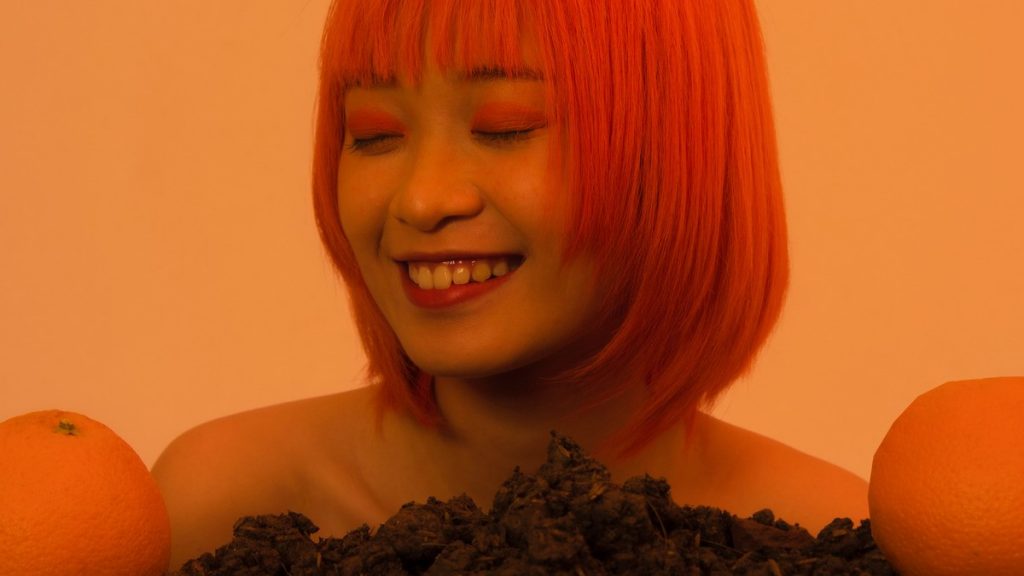
The inspiration for Dat’s piece came during lockdown. Like any protective Vietnamese mother, Dat’s mother braved the coronavirus to deliver him a huge surplus of oranges.
“I know orange is a happy color,” Dat says. “There’s a quote by Frank Sinatra saying it is the happiest color. But the more I ate the oranges, the more I hated it. I grew tired of the same taste. It was a good thing but a lot of the same good thing can become a bad thing.”
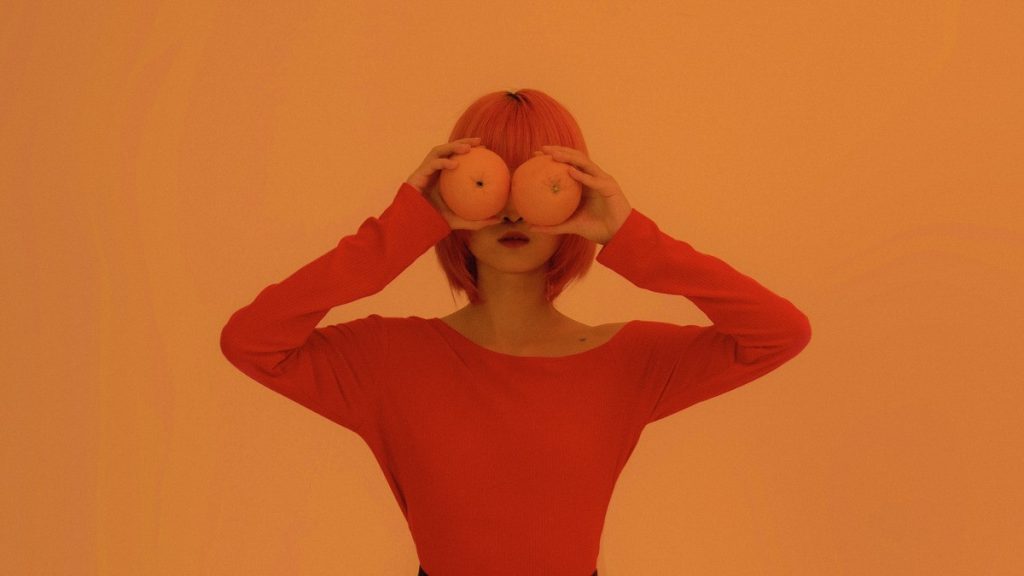
Once lockdown ended, Dat enlisted the help of fashion model Hai Ly, bathing her in unreal, orange light. The array of Dat’s photos ranges from the sweet to the sinister. The first photo features a cheery young woman, with orange hair, surrounded by fruit and vegetation. In the subsequent photos, no smiles can be found. Rather, Ly’s eyes despondently avoid the camera. Despite the sadness pictured, the intense orange-ness paints each piece in a mawkish glow. The deep saturated colors appear ominous. Eventually, both the oranges and the model begin to rot.
“For me, 2020 has been like a rotten orange. It has even made some people rotten too,” he says.
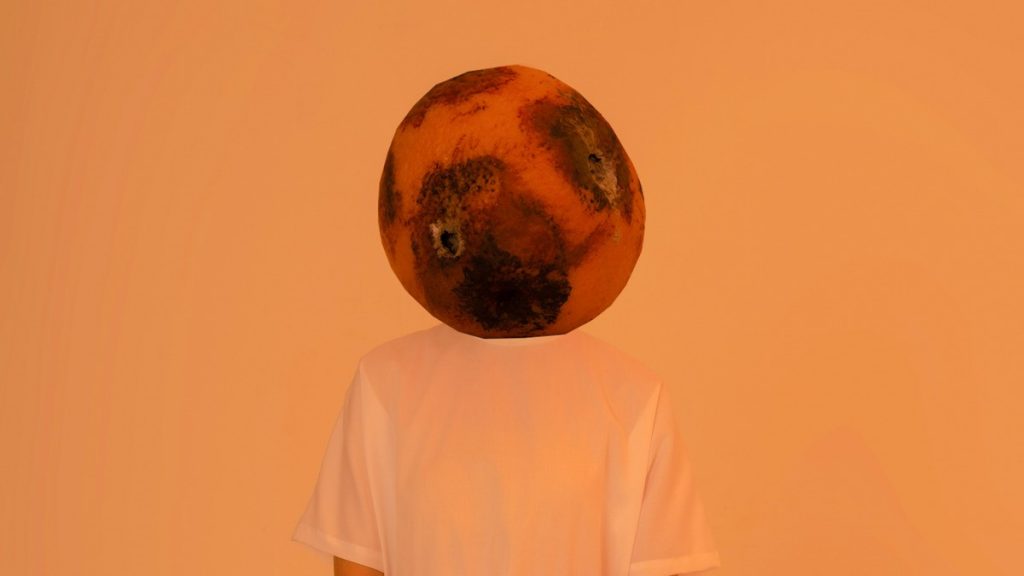
Dat shrugs when contemplating the future. “This year has been a huge alarm clock for me. I hope things get better. I have to get serious or choose something else. I picked the wrong year to move out of my parent’s house.”
Like many of artists, the pandemic has caused Dat to do some serious soul-searching which has inspired profound pieces. While plenty are happy to share what they accomplished during lockdown, Tymbios sympathizes with those too distressed to create.
Tymbios experienced her own personal tragedy when her friend passed away in April due to cancer. The death was a huge shock. Tymbios could not visit her friend for her final moments because of social distancing measures and had to mourn her friend while coping with the pandemic.
“I still think about her,” she says. “Her birthday was recently. She was very much in my mind. She is very much still a part of my life. When someone dies, I don’t think they just stop existing in all forms.”
Tymbios offers advice for grieving artists: “Take a break if you need to. What you create is an expression of what you went through so make sure you go through it. Creatives are emotionally aware people. When something as final as death hits, take time to truly feel it.”
With the current, worldwide death toll at 1.6 million, plenty of people are struggling with what to feel under the Covid-19 pandemic. Hopefully in the coming weeks, the vaccinations being made will allow for the world to fully reopen. Yet, a vaccination cannot treat the massive amounts of spiritual and emotional pain felt across the world. It is, perhaps, only artists who can heal those wounds.
“2020- Life in Times of a Global Pandemic,” begins Sunday, Dec. 20 at 2 p.m. until Jan 3.
ARCH Cafe Bar
143 Nhat Chieu, Tay Ho.


